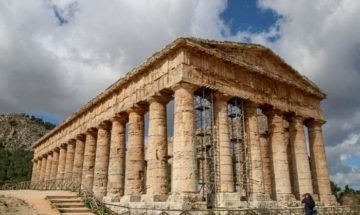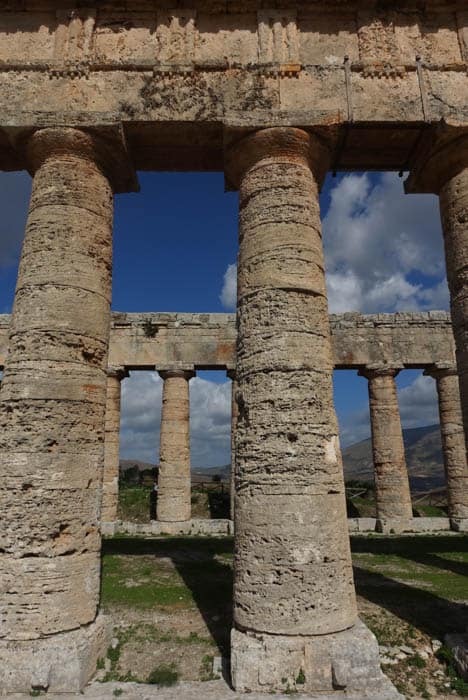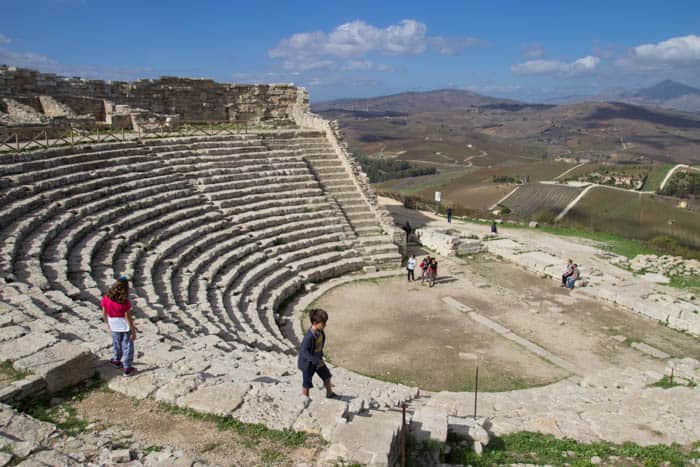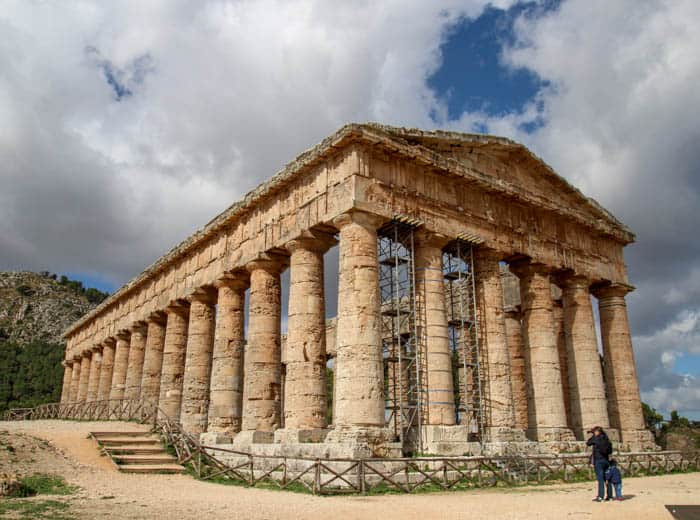
Segesta temple in Sicily is not to be missed!
One of the most stunning buildings I saw when we visited the Western part of Sicily last year (yes, this post has been a long time in coming!) was this ancient Doric temple ruin near the small town of Calatafimi-Segesta, near the slopes of Mt Barbaro. I remember learning about Greek and Roman column architecture way back in my misty school past, but couldn’t quite remember what “doric” meant. For those of you who, like me, have forgotten or never knew in the first place, I looked it up for us and it means the architectural style came from Western and mainland Greece. The columns are grooved or smooth and have no fancy bits carved at the top them like the Ionic and Corinthian orders which originated in different areas of Greece. So, now you can sleep better at night knowing that.
A little history about the area
The temple stands on a hill that gives you sweeping views over a large green valley. I can completely understand why they built the temple here! So who built it? Well, apparently, it was built by some mythical-sounding people called the Elymians. From the name, they sound like a people who come from a fantasy book where they fought dragons and built the temple to magically defend their villages from ogres. The real history is probably much less dramatic. These people lived in Sicily during the Iron Age. It is said that they fought with Greek colonists, who eventually convinced them that living in the Greek culture was a good idea, so the town of Segesta became mixed.
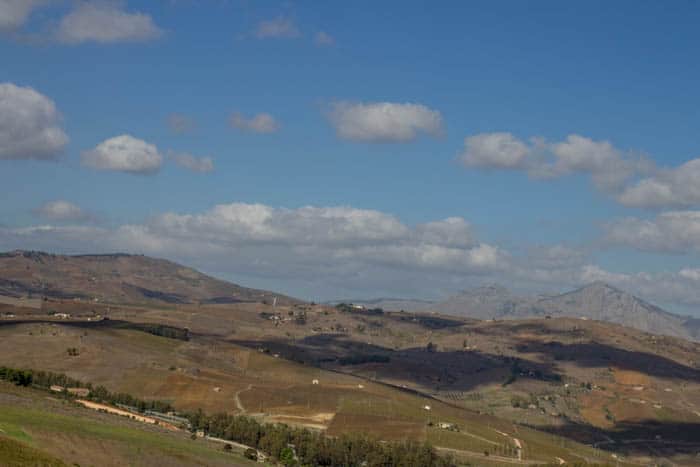
Why was the Segesta temple built?
A Greek architect convinced everyone that it would be a good idea to build the temple, so they did in the 5th Century BC. It was never finished completely and the town of Segesta was razed to the ground in the 4th Century BC by the far-from-home East Germanic Vandals. The Romans, of course, were everywhere in Europe at that time, so they were also heavily involved in the history of Segesta. History seems to get pretty complicated around that time, with many different people roaring back and forth across Sicily, attacking each other and making life pretty miserable for anyone who just wanted to live peacefully and raise their crops.
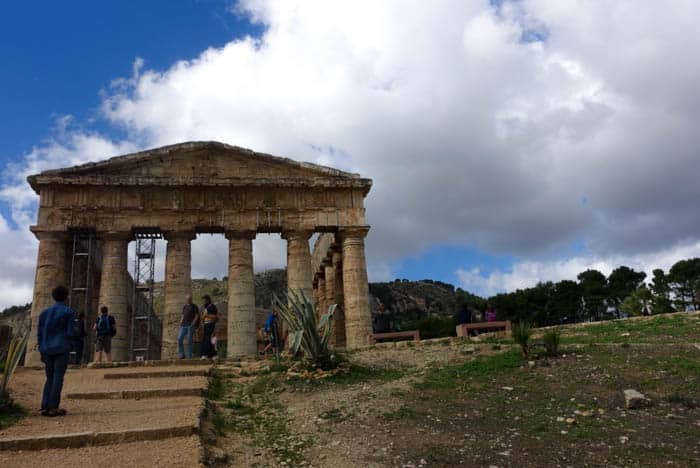
What to look at when you visit the temple
The temple sits just up the hill from the ticket office and visitor centre. Already, as you trudge up the hill, you have fantastic views down into the valley. Once you get to the top, it’s difficult to know what to look at first: the building itself or the far-reaching views. Luckily, you have time to do both!
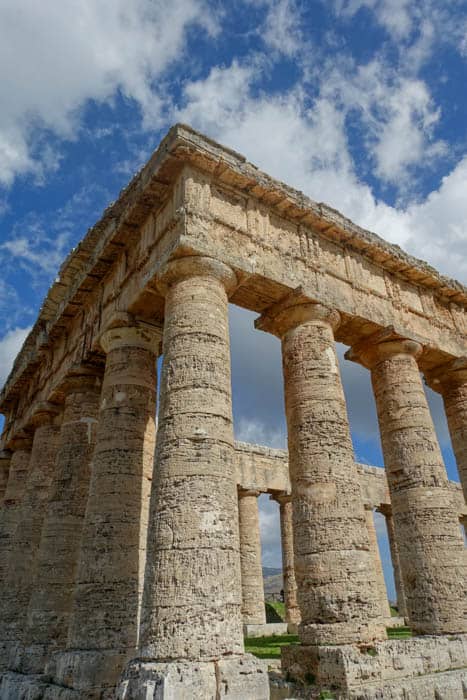
The views get even more spectacular when you walk up Mt Barbaro on the other side of the visitor centre to the amphitheatre built around the end of the 4th Century BC by the Greeks and restored by the Romans in the 3rd Century AC. There is a little bus that will take you up there, but if you can walk up, it’s worth it as there are many ruins to explore on your way.
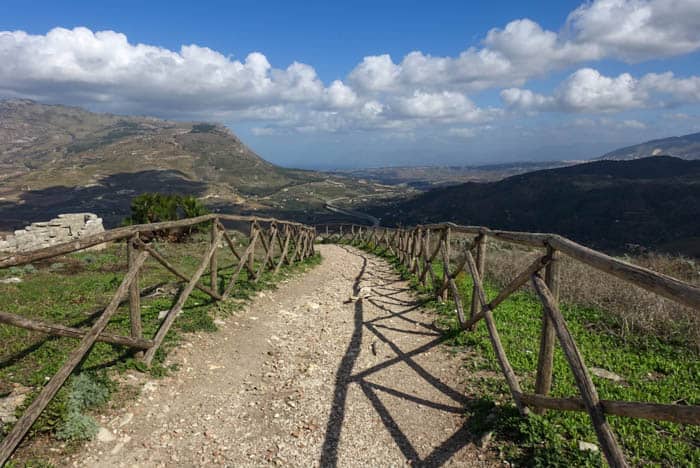
Don’t forget to visit the amphitheatre too
Once you puff your way to the top of the hill, you first walk through the ruins of an Islamic mosque and necropolis that is said to have been built around the 12 Century AC before you get to the theatre. It is truly amazing that in this small area, you can clearly see the layers of thousands of years of history. It becomes easy to imagine the daily lives of people who walked 1000 years ago on the same stones as you are walking on right now.
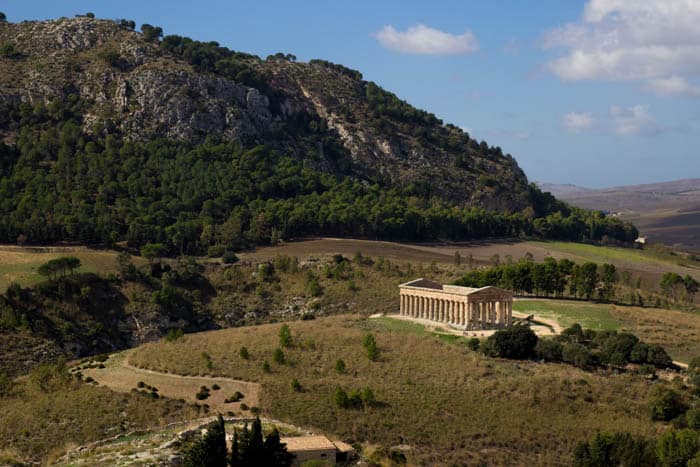
During the Summer you can go to the amphitheatre and watch shows and concerts. The views are so amazing over the Gulf of Castellammare, I think it would be difficult to concentrate on the stage! The only disappointment I had here was that I bought a one of a kind ceramic bowl painted with designs particular to the Western part of Sicily in the gift-shop at Segesta. I carefully carried it home in my hand-luggage, stressing all the time that it would break. The following week, I was walking through the local village market in France where I live, and lo-and-behold, I found exactly the same bowl…..for less money! Arrrgghh! Globalization strikes again!
By Lisa Watson
